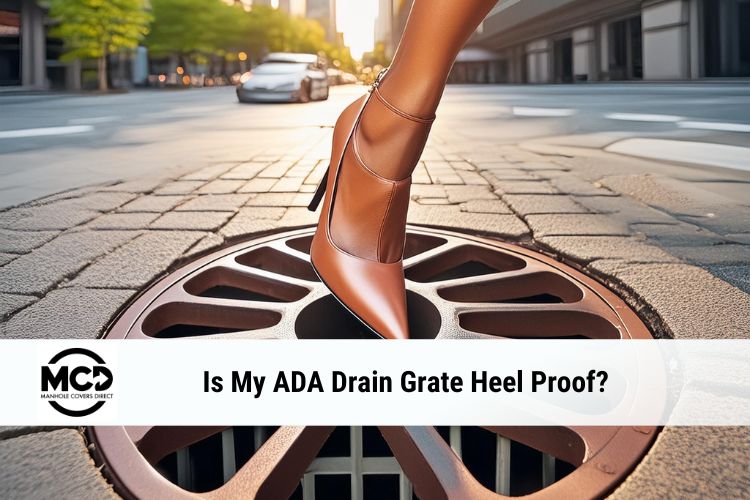
Although many drain grates may seem similar in appearance, each drain cover requires different safety requirements depending on its location and purpose. While standard drain grates, with large slots, help facilitate the flow of water, there are two other types of drain grates that aim for patrons’ safety over the flow of water. These types of drain grates are ADA compliant and heel-proof, which are much less easily recognizable with smaller slots compared to a standard drain grate.
ADA Compliant Grates:
Drain grates located in pedestrian-accessible locations must comply with the Americans with Disability Act (ADA), which prevents discrimination against people with disabilities in employment, public accommodations, transportation, etc.
In order for a drain cover to be ADA compliant, the slots or holes must be no larger than ½”. The direction of the slots also must lie perpendicular to the predominant direction of travel to ensure those using walkers, canes, and wheelchairs will be able to safely cross the grate safely. To learn more about ADA Compliance, check out our blog, ADA Compliance in the World of Drain Grates.

Heel Proof Grates:
When it comes to heel proof drain grates, they are always ADA compliant but have a different set of parameters and purposes beyond the ADA. Heel proof grates are tailored specifically to patrons in high heels, making bars, restaurants, and patios safer places for heels.
Similar to ADA compliant grates, the main goal of heel-proof grates is to protect people from potential injury. Heel-proof grates typically have holes ¼” or less to ensure no heels get stuck, preventing tripping hazards and accidents.

What is the Difference?
Although ADA compliant and heel proof drain grates share similar characteristics and functionality, some specific differences set them apart. A drain grate can be ADA compliant but not heel-proof since its slots can be up to ¼” larger.
Heel proof grates protect the general public whilst enjoying a night out in heels while also protecting Americans with Disabilities at the same time. Although there are a few differences with each of these types of grates, the most important thing to both is the safety of the people.


